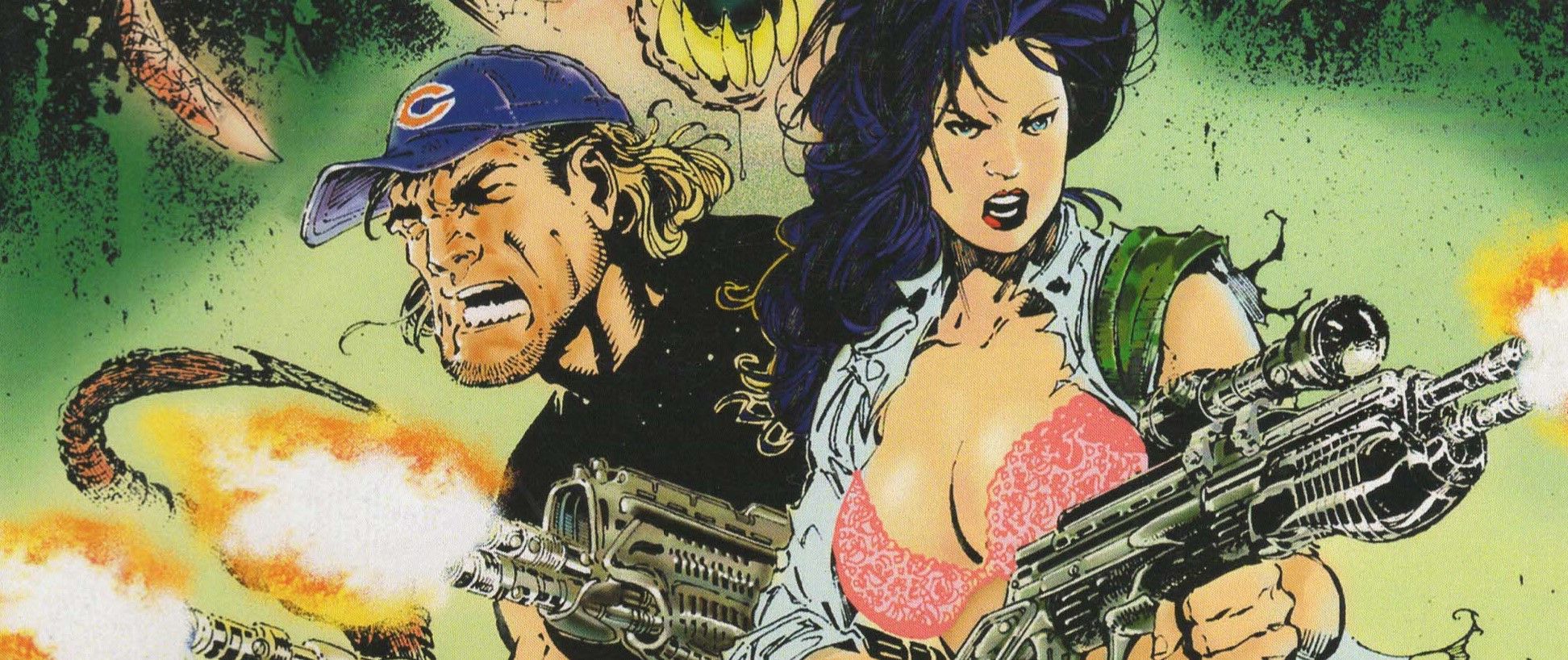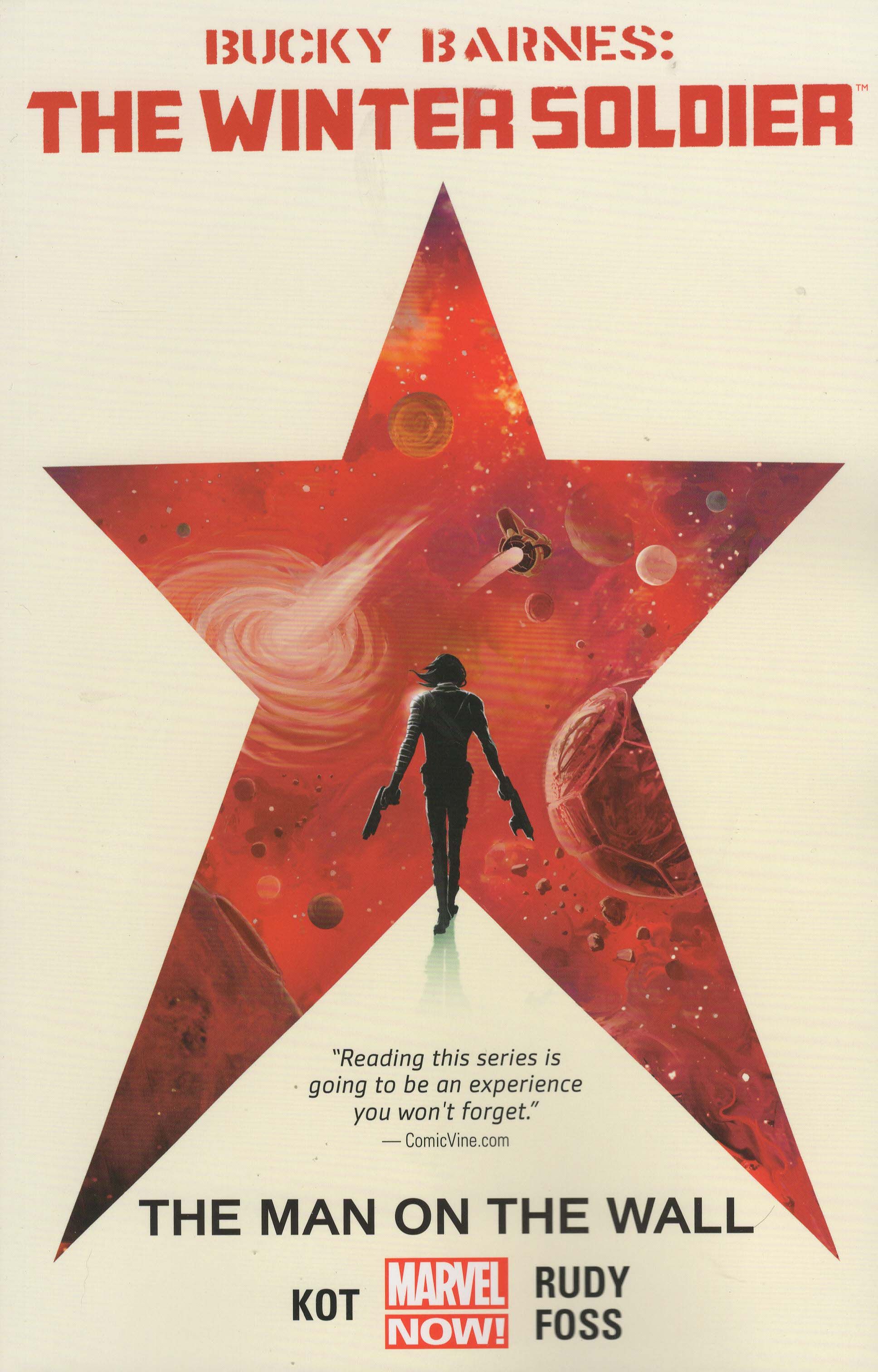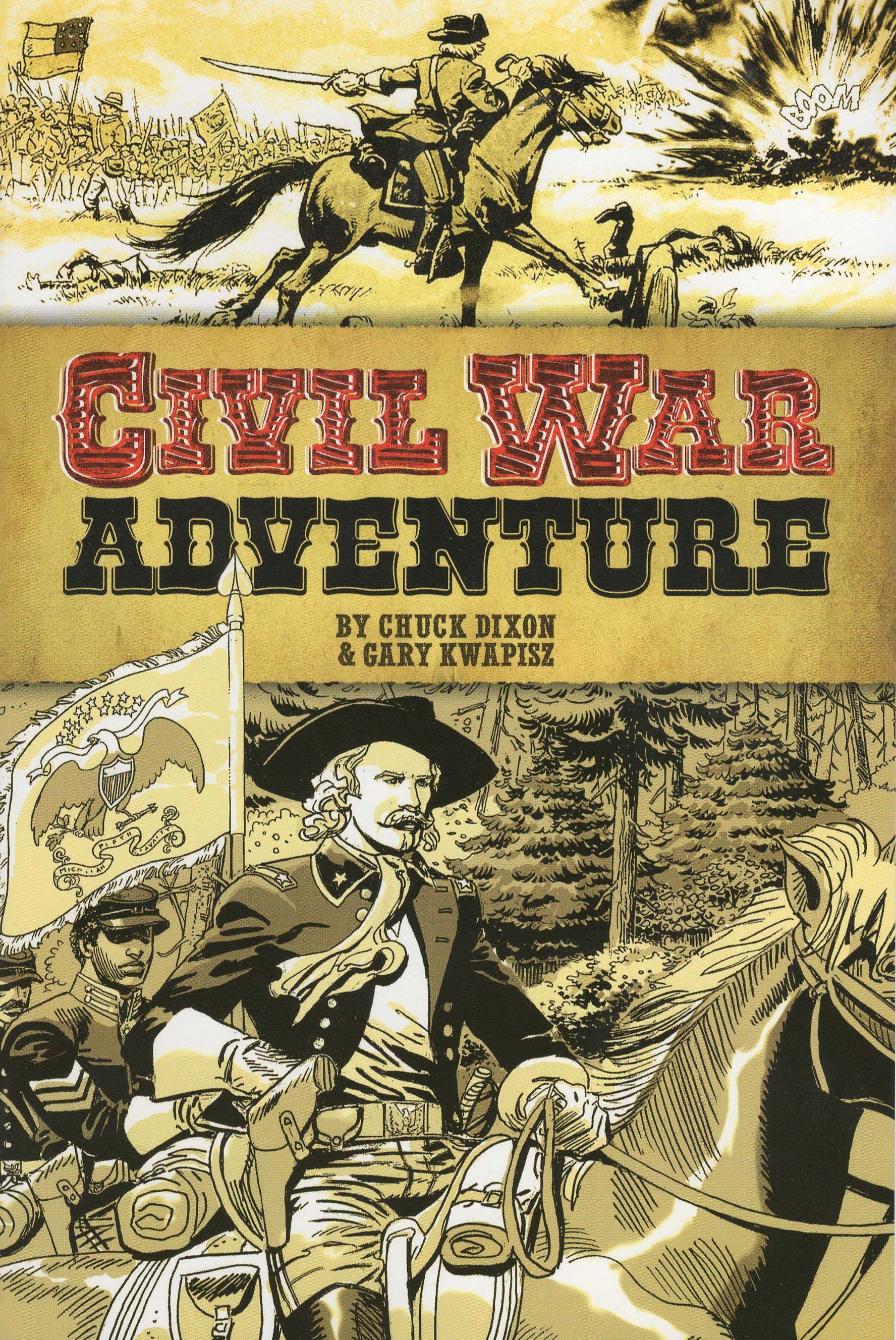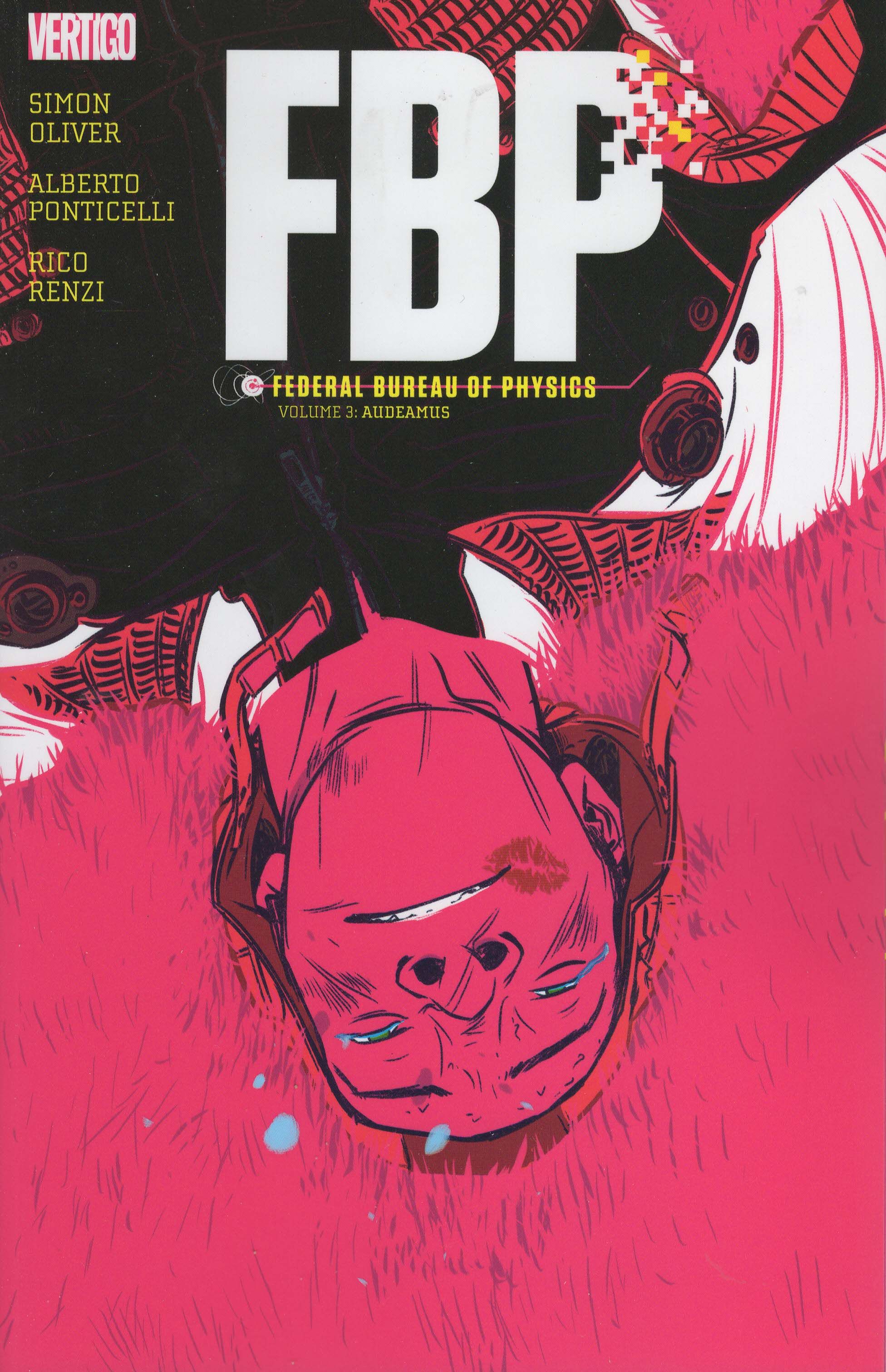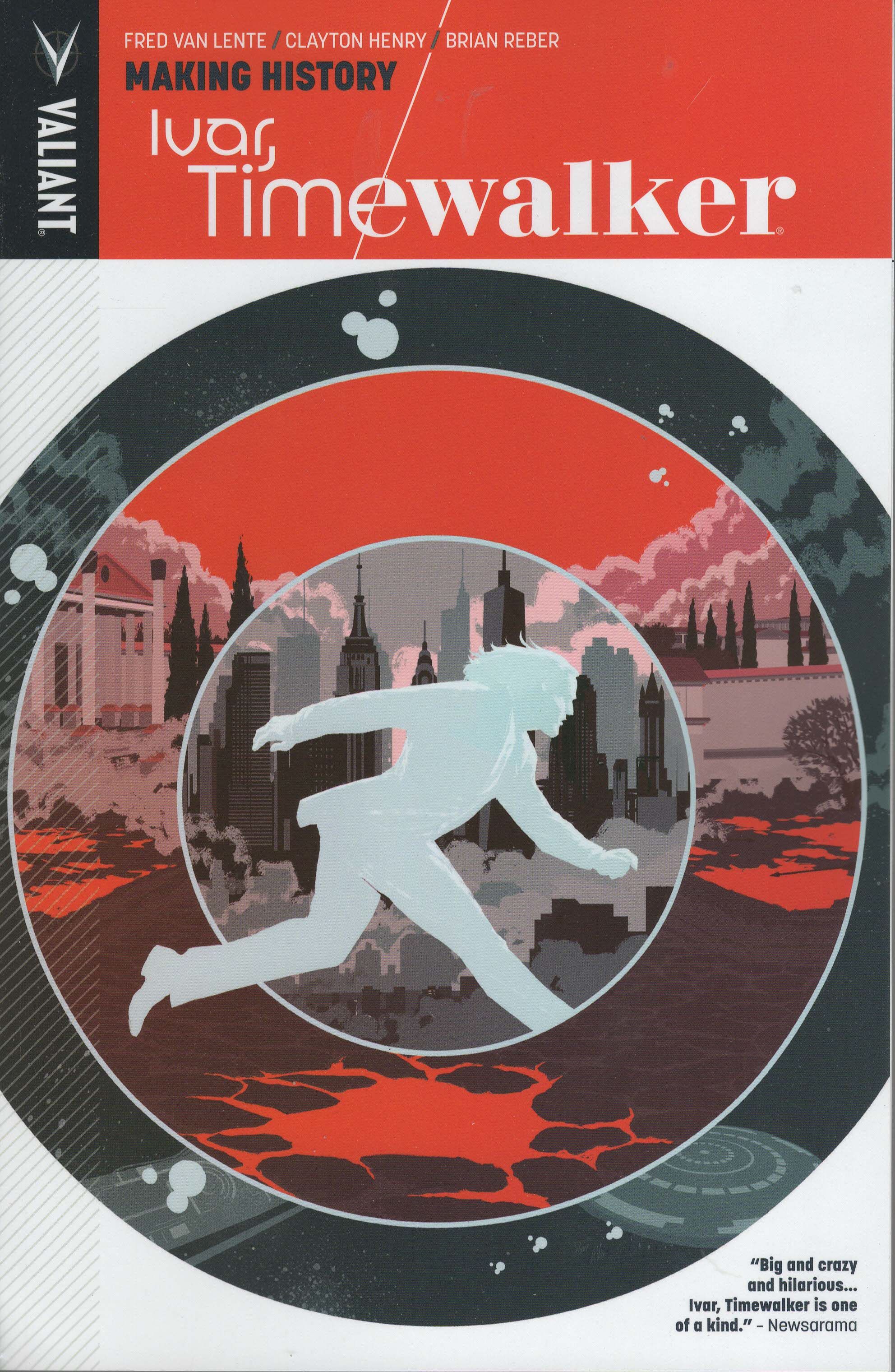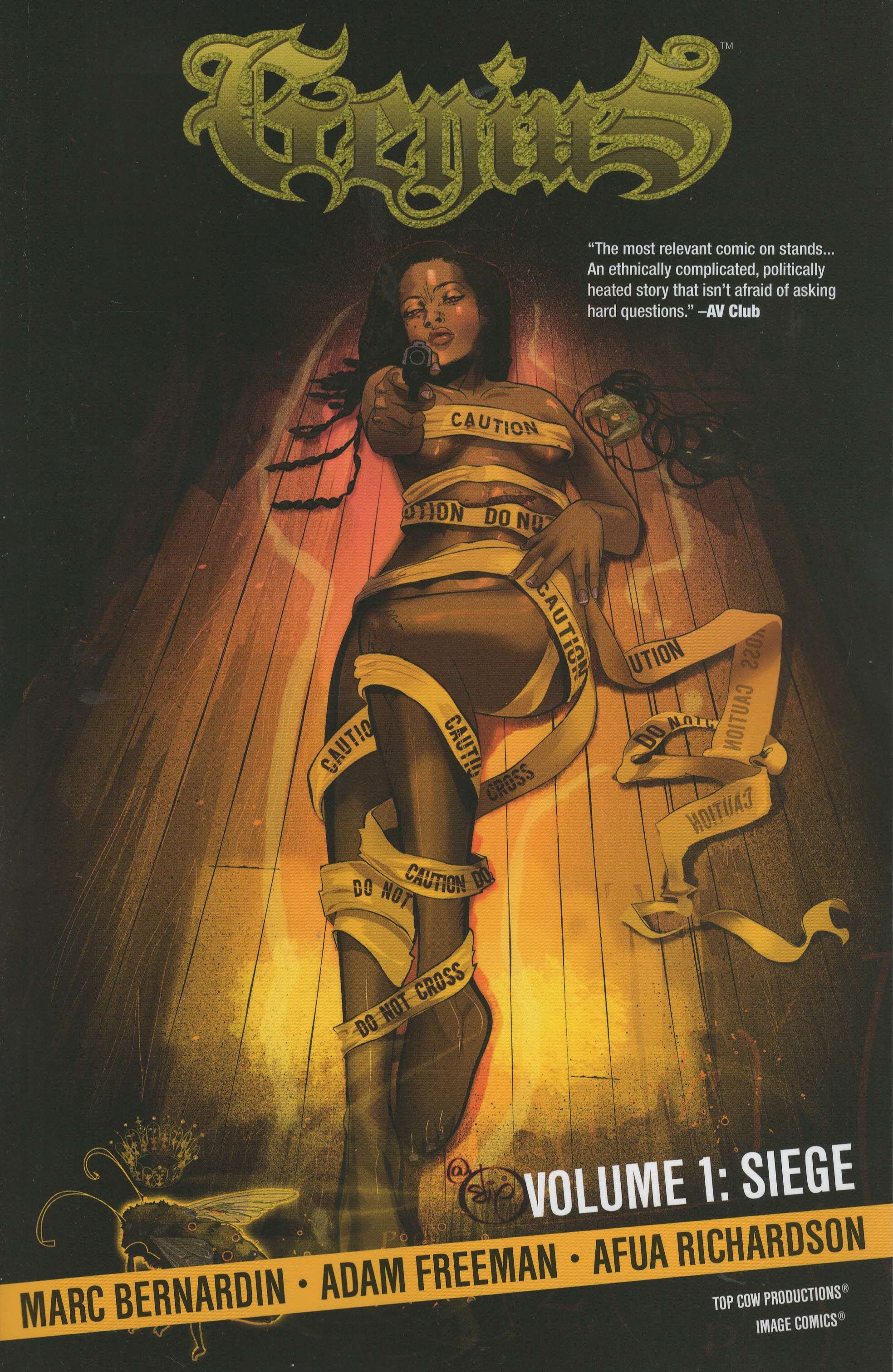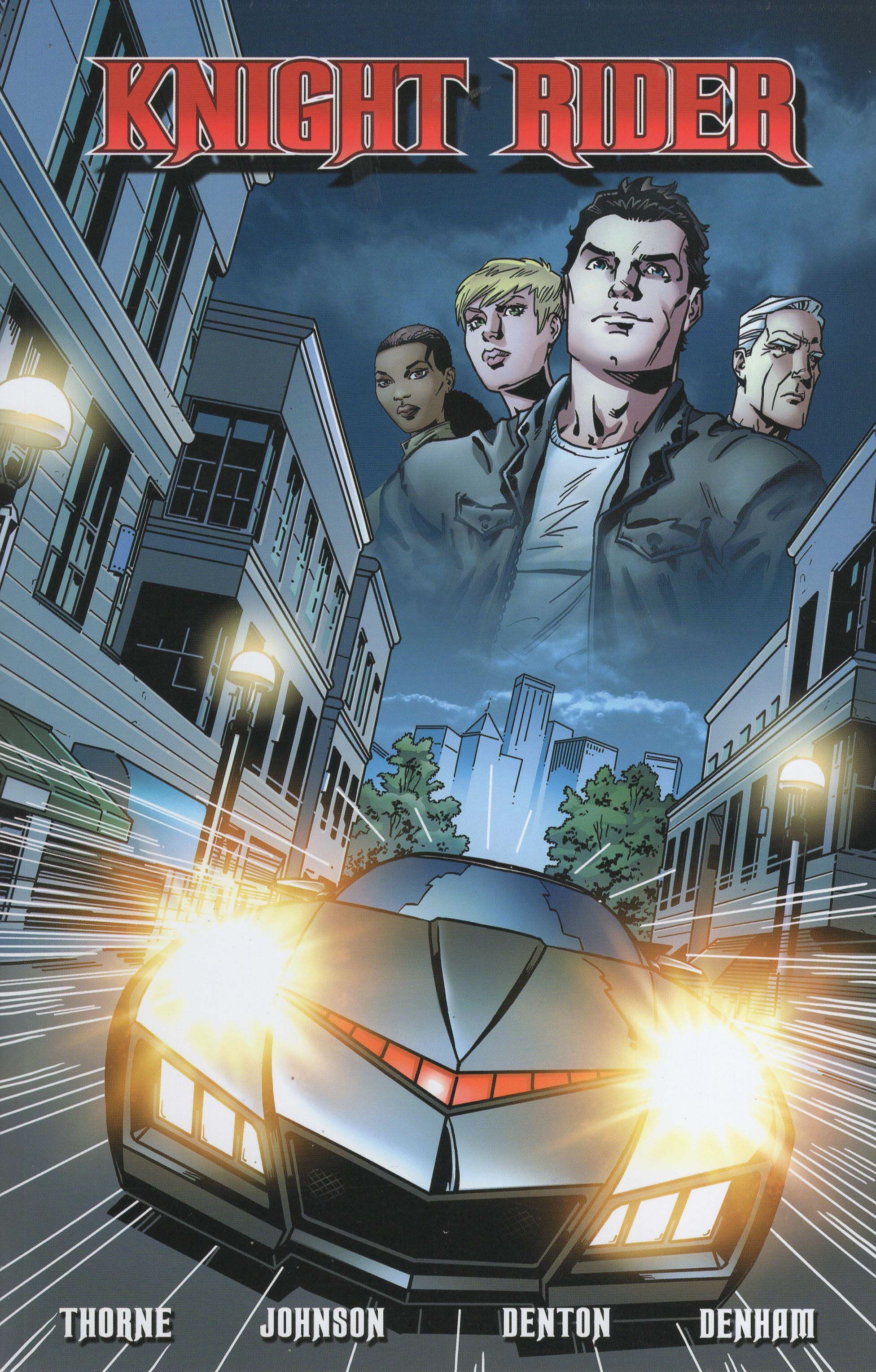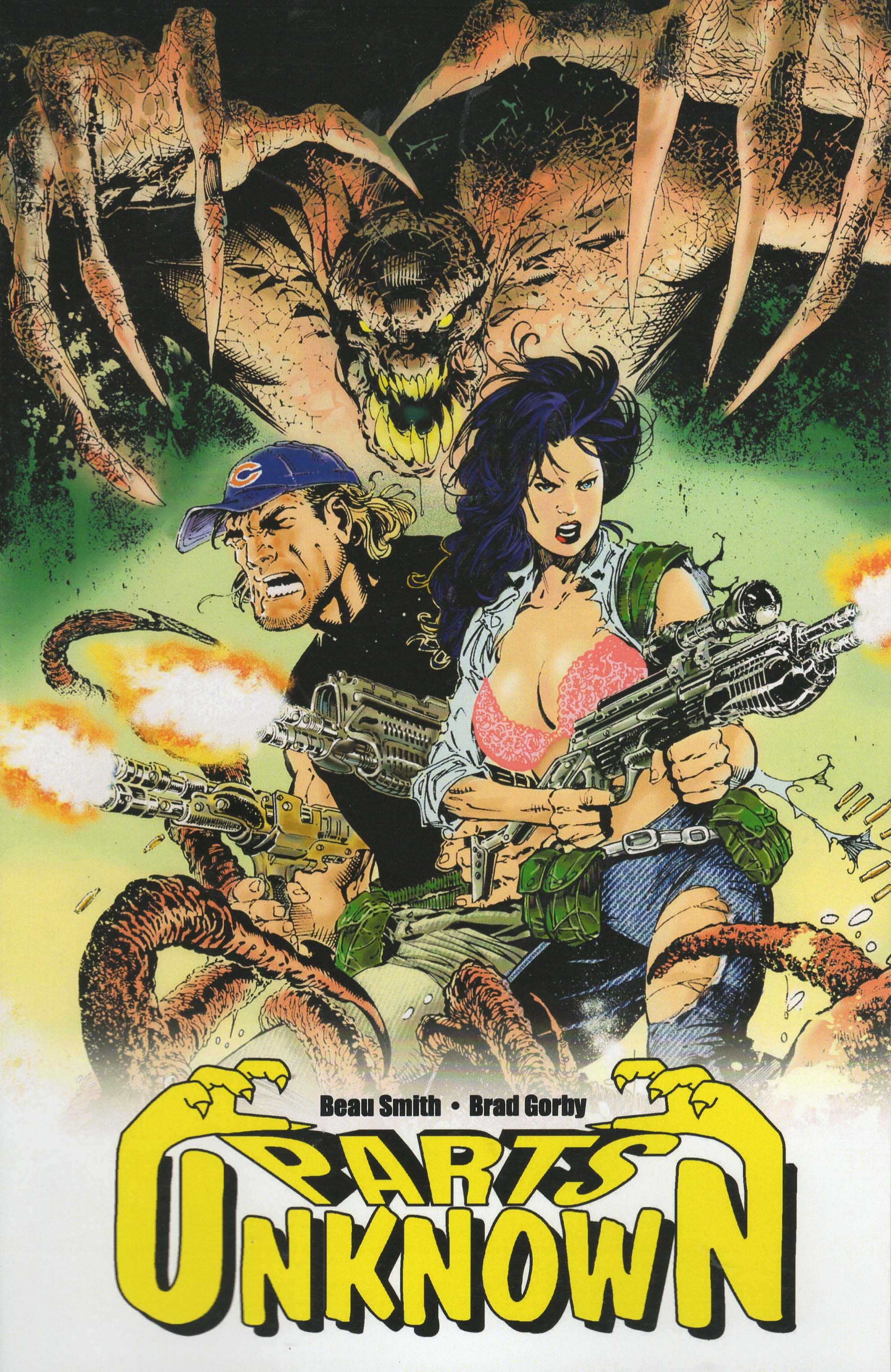Here's another post that's a bit late, but that's the way it is! You know you love it when I blather on about comics, so join me under the cut!
Bucky Barnes: The Winter Soldier volume 1: The Man on the Wall by Jordan Boyd (colorist), Clayton Cowles (letterer), Langdon Foss (artist), Ales Kot (writer), Marco Rudy (artist/colorist), Michael Walsh (artist/colorist), Sarah Brunstad (assistant editor), and Jennifer Grünwald (collection editor). $16.99, 100 pgs, FC, Marvel. Bucky Barnes created by Joe Simon and Jack Kirby, although he's such a different character now I'm tempted to say it was Brubaker and Epting, but whatever. Daisy Johnson created by Brian Michael Bendis and Gabriele Dell'Otto. Crossbones created by Mark Gruenwald and Kieron Dwyer.
Kot does the best with a terrible idea, I suppose, as the idea of a "man on the wall" is unbelievably stupid in a Marvel Universe with so many superpowered individuals. The premise is that Nick Fury was secretly keeping the Earth safe from all manner of alien threats, but that came out in Original Sin, I guess, and Fury then became the new Watcher? Wait, really? Holy shit, that's stupid. Anyway, he can't be the man on the wall anymore, so Bucky takes over. I guess it makes sense, as Bucky is displaced in time and now that he's not Captain America anymore, he really doesn't have anything to do. He's a generic spy/assassin, and that thankless role is already filled in the Marvel Universe by Natasha Romanov (I love her too, but you know it's true!). So why not make him a super-duper secret assassin who protects the Earth, even though there are at least a dozen groups of actual superpowered people doing just that. But Marvel needs product, so let's pump it out!
You might say, "Well, shit, Greg, why the hell did you buy this, then?" Well, as you know, I'm far more interested in creative teams these days than the actual premise of any series, so while it's an idiotic idea, I like reading Kot's work because it's a bit like watching a car actually crash as it happens, and Marco Rudy has reached such lofty peaks as an artist that he could illustrate a cockroach crawling across the floor and I'd probably buy it. So I wanted to check this out, just to see what would happen. Kot doesn't really rescue the idea, but he does go about as esoteric a Marvel comic can get, telling a story of alien sex, cute dogs named Niles and Steve (which I really hope are a shout-out to the writer), alternate universes, the power of love, and interesting uses of guest artists. It's fairly incoherent, but that's kind of Kot in a nutshell. He's rarely boring, but he's also rarely able to pull all his disparate weirdness together. He doesn't quite do it here. Why is Crossbones in this book, for instance? Hell, why is Daisy Johnson? Kot's plot takes him from Namor fighting drug dealers to Loki to a distant planet, and Kot tries to follow the thread, but it still doesn't make any sense, especially when the alternate dimensional, old man Bucky shows up and we get into the healing power of banging an alien princess. I mean, the book begins with Bucky and Daisy straight up murdering someone for absolutely no reason, and it feels like Kot just put it in there to comment on the Iraq war. Seriously.
Kot obviously has more on his mind than just a standard superhero story, and I'm totally down with that. It's also worth noting that these five issues don't make up a complete story, so I imagine Kot will at least try harder in the next volume to pull it all together. That doesn't completely mitigate the sins of this volume, but it does temper them somewhat. And it is also somewhat true that the artwork goes a long way toward softening the blow. Since he began going nuttier with design - I would speculate that it was when he drew Swamp Thing in 2011, but I could be wrong - Rudy has become one of the more remarkable artists working today, and on this book, he's paired well with a writer who seems to go balls to the wall with no regard for consequences. Rudy is like that - his paintings are breathtaking, but they sometimes interfere with his storytelling. It's not too bad, and I certainly don't want him to revert to his older style, but it would be nice to see him get that just a bit under control. He's in his element here, as Kot's story lets him draw alien worlds that look like they've come right off one of those pulp paperbacks Greg Hatcher loves so much, and the fact that Kot wants to mess with our perceptions and use alternate dimensions also fits into Rudy's phantasmagorical page layouts. Kot also uses the guest artists well - when Walsh draws a few pages in issue #3, one of the character comments on how their perception of reality has changed, and Kot uses that trick again when Foss draws some of issue #4. Kot knew Rudy couldn't keep up the pace, and he integrated that well into the way his characters see the world. It's small moments like these that make me trust that Kot will one day become a great writer, even if right now he's more bluster than payoff.
I do admire what Kot and Rudy are trying to do with this comic, even if the idea behind it is terrible. If you're stuck on a comic that stems from a horrible idea and which might not sell very well anyway, you might as well go nuts with it. It's something I always hope writers and artists do on books that, let's be honest, may not last long. You wouldn't want Kot and Rudy working on one of the main Avengers or X-books, but a Bucky Barnes solo comic? Sure, why the hell not let them do some wacky shit? It might not work completely, but we can't say the book isn't a unique curiosity!
Rating: ★ ★ ★ ★ ★ ★ ½ ☆ ☆ ☆
Civil War Adventure by Erik Burnham (writer), Chuck Dixon (writer), Gary Kwapisz (writer/artist), Esteve Polls (artist), Dave Rothe (letterer), Silvestre (artist), and Enrique Villagran (artist). $9.95, 141 pgs, BW, Dover Publications.
I've noted before that very few writers currently working can write good war comics, and it seems that right now, it's a list of two: Garth Ennis and Chuck Dixon. Dixon is more politically conservative, so his war stories have a slightly different flavor to them than Ennis's, but it's interesting that these two gentlemen seem like the only writers who can really get into war without glamorizing it too much but without simply writing an anti-war story. I imagine neither Ennis nor Dixon are exactly pro-war, but they seem to find a fine line between being stridently anti-war and showing how it bonds people together even during the most horrific parts of it. It's a neat trick, and that's why there aren't many good war comics writers.
The Civil War is always fertile ground for war comics, because unlike World War II (the other "good" war for writers to mine), the bad guys are Americans, so it brings up all sorts of loyalty issues and reflections on what an American is and what our freedoms mean. The problem with Civil War comics, and one which Dixon doesn't really avoid, is the romanticizing of the South. There's a tendency in Civil War fiction to write the South as this noble place where the good ol' boys are just trying to save their land from Northern aggression, but that doesn't really hold water when you think about the fact that the South started the hostilities. So we get the requisite aside about most of the Southerners not owning slaves, and even one scene where a soldier has never seen a black person before, and there aren't very many sympathetic portrayals of Northerners in the book - there's a story about an ironclad told from the Northerners' point of view, and there's a story about Custer in which he defeats a larger force of rebels but also shows how reckless he is, which just might be foreshadowing on Dixon's part. Other Northerners are portrayed as rapacious subhumans, and it's kind of strange. There's definitely a romantic element to the antebellum South, as it's a culture that looks good in fiction and is lost forever, but it's weird that writers don't accept that it was built on a slave economy and is probably not worthy of the romanticizing. Oh well.
The stories are all solid once you get past that - Dixon tells one long story (that doesn't finish in this volume) of a boy and his father going off to join the Army of Northern Virginia, and it's what we expect from that kind of story, as Dixon does show the brutal conditions of the army and even that the enlisted men might be too far apart from the officers, class-wise, to make it work. He gives us several vignettes about various smaller moments in the war, which don't tell us anything new (war sucks, basically), but are entertaining. His main artist, Kwapisz, does very nice work - I always thought Kwapisz was ill-served on the superhero books I saw him draw back in the 1990s, and 20 years later, he's doing fine work on a more realistic topic. His curvy line work can handle the action, while it's just cartoonish enough that it doesn't end up making the war look too brutal. Kwapisz doesn't want the book to be so horrific that no one wants to read it, but he wants to make it brutal enough to show how bad war is, and he does that well. The other artists acquit themselves well on shorter stories. It's nice to see Polls's work, for instance, when it's not drenched in the digital coloring that his work gets drenched in whenever he draws for Dynamite.
This is an entertaining book, and if you know absolutely nothing about the Civil War, Dixon does have one-page informational essays scattered throughout about some of the slang used during the war and some short biographies of the participants. That's always handy!
Rating: ★ ★ ★ ★ ★ ★ ½ ☆ ☆ ☆
FBP volume 3: Audeamus by Simon Oliver (writer), Alberto Ponticelli (artist), Rico Renzi (colorist), Steve Wands (letterer), Michael Wiggam (colorist), and Liz Erickson (editor). $14.99, 122 pgs, FC, DC/Vertigo.
I enjoyed the first two volumes of FBP, but this one bored me quite a bit, and it's too bad. I'm not sure what it is - the first two issues of the collection, which focus on Cicero DeLuca, who's the least interesting team member so far, are an attempt at the inversion of the nerd-vs.-jocks stereotype, but it doesn't work all that well, especially when Oliver ends up not subverting it at all. It feels like a juvenile story, which is too bad when the comic has been avoiding that for the first 13 issues. Then we get back to the main plot, and ... it's about the end of the world. Of course it is. I'm a bit tired of apocalypse literature, because it's inevitably fairly boring. It's not that it's predictable, because some writers have actually ended the world - or at least one version of it - so who knows what Oliver is going to do with this plot, but it just feels tired. When eccentric gazillionaire Lance Blackwood tells the team that the end of the universe is nigh, I just mentally shrugged. I'm tired of such ridiculous stakes. Yes, Adam will want to get his father back if that's possible, and that's a nice, personal motive for his actions, but Oliver just goes through the motions about the threat to all reality, so when the one dude leaves a bolt not completely screwed in, it just feels lazy. In the outside world, everything has gone to shit, too, but even that feels lazy. I'm just too jaded about THE END OF THE WORLD!!!!!, I guess. It does nothing for me.
Ponticelli's art is a bit of the problem, although not much. His style just doesn't match the insane stuff Robbi Rodriguez was doing on this book, and even that was watered-down Nathan Fox (Fox continues to do covers of the comic, which makes me wish he did interiors and doesn't help). I like Ponticelli, but he's much more of a meat-and-potatoes kind of artist, and most of the "physics" effects don't look as weird and out-of-place-in-our-reality as they should. It's not bad art, as Ponticelli can certainly draw well, but it just doesn't bring the insanity quotient necessary for this title up to the correct level. Again, it's just too bad.
I doubt if I'll get the next volume - if this is Oliver's big plot going forward, I just have no interest in it. Oh well - it'll save me a little bit of money, I guess.
Rating: ★ ★ ★ ★ ★ ½ ☆ ☆ ☆ ☆
Ivar, Timewalker volume 1: Making History by Bit (inker), Andrew Dalhouse (colorist), Robert Gill (artist), Clayton Henry (artist), Francis Portela (artist), Brian Reber (colorist), Dave Sharpe (letterer), Fred van Lente (writer), Tom Brennan (editor), Josh Johns (editor), and Warren Simons (editor-in-chief). $9.99, 87 pgs, FC, Valiant.
Van Lente does these kinds of stories so well - they have quite a lot of humor in them, but he shifts easily to serious things that exist alongside the humor pretty well. In the final issue of this collection, Neela Sethi, who's kind of our POV character since the title character is an immortal time traveler, is back in time trying to save her father, because she thinks she's figured out that you are allowed to change history even though Ivar has been telling her she can't. Her father died after a car accident because he reacted badly to the anesthetic, and Neela thinks she can convince the doctors not to give it to him. It's a tragic sequence of events, as Neela finds herself woven into the day in ways she couldn't have anticipated, but it's also quite funny, as she goes to wild lengths to save her father, leading her back to the bar at the beginning of the issue, where she found many different "Neelas" in various states, and van Lente explains how they all got there and why one, for instance, is bald and why another is wearing a bikini. Van Lente does this very well, and it's one reason why he's such a good writer. He also manages to highlight the ridiculous in comics without poking fun, which is hard to do. He understands what every time traveler would like to do - kill Hitler - and so he builds a plot around that. He makes Neela voice all of our concerns about time travel through the prism of popular culture - she's read "A Sound of Thunder" - which makes me happy, because too often in comics popular culture doesn't seem to exist. He doesn't fool around with hiding plot points from us - he lets us know early on that Ivar might not be that trustworthy and who the "villain" of the book is (whether that person is the actual villain remains to be seen), which means that we're not trying so hard to figure out what's going on and can enjoy the story unfolding. Obviously, we still don't know if Ivar or the other person is the villain, but van Lente gives us the opposing forces so that we're more concerned with reading what they do carefully for clues about their ultimate intentions rather than just read it to figure out who's going to make a dramatic entrance as the villain. Van Lente is perfectly fine at plotting, but he also knows that characters drive the story, and so he works more at making them more real than if they were just plot devices. I always appreciate that.
Henry et al. do their typical nice job with the art - it's not spectacular but it's not bad, and the coloring has that slick look that we get on all Valiant comics. Occasionally one of their comics will have really nice art, but for the most part, it's just solid. Henry is a decent storyteller, and he does get to do a few interesting things - when Ivar and Neela jump through several different time periods in a row, he has some fun with that - but for the most part, the art tells the story and doesn't get in the way. There's nothing wrong with that.
Valiant does these 10-dollar trades, which is pretty neat, because it saves you 6 bucks off the single issue price. When van Lente is writing the comics, it's usually enough to hook me, but I'm rarely disappointed when I actually read the story!
Rating: ★ ★ ★ ★ ★ ★ ★ ½ ☆ ☆
Genius volume 1: Siege by Marc Bernardin (writer), Adam Freeman (writer), Troy Peteri (letterer), Afua Richardson (artist), and Betsy Gonia (series editor). $14.99, 126 pgs, FC, Image/Top Cow.
So here I am, writing about the 30th anniversary of the MOVE bombing a few weeks back, and then I read Genius, in which the cops fight a war against black people on the streets of Los Angeles. Very weird. IT'S ALL CONNECTED, SHEEPLE!!!!!
Genius is a pretty good comic, although it seems like Bernardin and Freeman fall into clichés a little too easily. That's not a deal-breaker - this is fiction, after all, and some clichés are expected - but it does make the book feel a bit less revolutionary. The title character is Destiny Ajaye, a 17-year-old who lives in South Central and who happens to be a great military strategist. She uses her talents to unite the gangs of L.A. and focus them on the real enemy - the police. Violence and mayhem ensue. You know, like they do. Bernardin and Freeman have a great hook - what would happen if a genius military mind was born into these circumstances? - and they do a pretty good job turning this into a metaphor for all sorts of guerrilla warfare, from the American Revolution to the Iraq war. It's a good metaphor, but it also means that they have a playbook, and the detective who figures out what Destiny is up to - even though he thinks she's a man, because of course a girl couldn't do stuff like this! - narrates that playbook at certain points, which makes the unfolding of events a little less dramatic than they could have been. Grey, the detective, even narrates how Destiny could have risen to power as the kingmaker before the inevitable coup, and we see that happening, too. It's a bit too neat and tidy, but again, it's not the worst thing in the world.
As always with fiction like this, I get annoyed by the clear distinctions between good and evil. Grey and possibly his captain are the only ones portrayed with any sympathy, and yes, I know there are horrible cops, but it's humorous how Freeman and Bernardin go out of their way to make sure that some of the dead cops are dirty. Destiny kills a lot of cops, though, and what's interesting about the comic is how Bernardin and Freeman just expect us to accept the premise that cops are inherently bad. The way fiction is presented in this country and how it reflects sociological norms is fascinating to me, and over the years, police corruption has become such a part of fiction that it's not even necessary for the writers to show them doing bad things and getting their comeuppance - Genius asks us to accept Destiny's word that the cops are bad, and only later in the comic do Freeman and Bernardin throw a bone to those who might object to her wholesale slaughter of police officers (that they're all men is interesting, too). I don't really care - I have my own issues with the police - but I find it fascinating.
Destiny, as a genius, is toying with the police, and it's this that makes the book not as great as it could be. She's so much better than they are at figuring things out that there's not a ton of tension about what's going on - even the inevitable betrayal within her own forces isn't terribly upsetting to her plans. The writers do a very nice job showing all her tactics as she strategizes, and while they dip into clichés a little, for the most part, they do a nice job turning some stereotypes around, especially with regard to their main character, who often has no idea what to do with herself because even her own peers have no idea what she's doing. The book ends the only way it really could without the writers killing Destiny (spoiler: they don't kill Destiny), which sets up a sequel but also feels a bit too preordained. It's not a bad ending, but it is a bit predictable.
It's quite neat seeing this book between two covers, because Richardson's art has changed since the book started lo those many years ago. She's always had a bit of a Tony Harris vibe to her work, but over the course of this series, she gets slightly less cartoonish in her style, especially on the final issue. She uses CGI well, integrating it into the scene so that it doesn't look too out of place, and her action scenes work nicely. She lays pages out well, without completely eschewing standard panels but also giving us a more holistic layout at times, which helps show the totality of Destiny's war. She does very well with the ghetto that Destiny defends, as she gets a good mix of abject poverty and sprinkles of affluence - very nice televisions, that sort of thing - and populates it with dozens of characters who look like they fit right in. The book is about subverting stereotypes to a certain degree, and that means Richardson wants to make the people look as "ghetto" as possible so their development as a well-trained army is more surprising. She does that well, not only with Destiny but especially with Destiny's best friend, Chavonne, who's not as smart as Destiny (no one is), but is quick and clever in her own right. Richardson does a very good job with the more subtle parts of the script, so that Bernardin and Freeman can make some of their points about stereotypes without being too overt about it.
Genius is an interesting comic, and it's certainly worth a read. It's not quite as radical as some have made it out to be, but it does have more on its mind than a lot of similar comics. And it looks very neat, too, which is always a plus.
Rating: ★ ★ ★ ★ ★ ★ ★ ½ ☆ ☆
Knight Rider volume 1 by AndWorld Design (letterer), Brian Denham (artist), Shannon Eric Denton (writer/editor), Jason Johnson (artist), Milen Parvanov (colorist), Sai Studios (colorist), and Geoffrey Thorne (writer). $14.99, 95 pgs, FC, Lion Forge/IDW. Knight Rider created by Glen A. Larson.
I bought Knight Rider not for any nostalgic tugging at the old heartstrings, even though I used to watch the show when I was but a lad. I got it because Shannon Eric Denton is a cool guy whose comics I like to support, and that's often enough for me. I happen to like Thorne's writing and Denham's art (although he only draws the final 24 pages), so it's not like I was completely in just because I like Denton, but it's what caught my eye in the first place. What can I say? I like to support people I like.
This is a decent "adaptation" - it's been updated and altered a little, but the main components are there - that also serves to sever Michael Knight from his support group at F.L.A.G. - a "lone wolf" hero is always an attractive option, and in today's world where large governmental organizations are trusted less than ever, it's almost a prerequisite. So in the beginning, Michael is babysitting a doctor, Katherine Beachum, who happens to be working on AI. She gets kidnapped, but not before she installs it in Michael's car, and so KITT is born. Prior to that, Michael's car was higher-tech than most, but it wasn't self-aware. Once Dr. Beachum upgrades it, KITT and Michael can go after her and thwart the bad guys. In doing so, they have to move outside of F.L.A.G., and so the lone wolf is born!
Thorne is a good writer for this kind of thing (he might be good at other things, too, but I haven't read enough of his work to know), because he understands how to write an action comic - keep the pedal down, throw in some humor, and hang on. It's certainly not the deepest comic, and the bad guy is really the only person it could be, but that's fine, because it's meant to keep you entertained for the amount of time it takes to read it, and it does. That might seem like damning with faint praise, but I hope it's not, because it's a fine line to walk - Thorne manages to create characters with a little depth, not indulge in sexist clichés that dog this kind of story, and create an interesting origin story. He does this all while barely stopping for breath, and that's not bad at all. Denton's story at the back of the book, after the main story has set up the new status quo, is more of the same - high-octane action that still manages to build the relationship between Michael and KITT. As action comics go, this is a good example. Does it delve into the meaning of life? Of course not, but that's not the point.
Johnson does nice work on the main story, as he has to fit quite a lot of dialogue onto the page but not obscure what's going on. He succeeds quite a bit, and the only time his art breaks down a little is when Michael and KITT crash on a lonely highway - we know what happens, but Johnson's angles are a bit strange. He does some nice work showing scenes from KITT's point of view, which makes the fact that he's an AI more "realistic," as of course he would have a point of view! He keeps up with all the action nicely, which is pretty much all he has to do. I like Denham's art more than I like Johnson's (and I'm mystified why Denham isn't a bigger star), and so I like his chapter a little bit more than the main story - Johnson is just a bit more cartoony than Denham, and I don't like the style as much, plus Denham puts some nice touches in his art, like the fact that the helicopter pilots wear helmets that make them look like skulls, which is creepy. Both artists fit a lot of information on the pages, which is kind of neat - you might expect this to be a quick read because it's so much action, but both Johnson and Denham make you appreciate every panel and the way they lay out the pages.
I'm not sure if more Knight Rider is in the pipeline (I plumb forgot to ask Denton at the Phoenix Comic Con), but this is a good beginning if indeed they do more with it. It's a fun, action-packed comic. That's always a nice read if everyone makes it work!
Rating: ★ ★ ★ ★ ★ ★ ½ ☆ ☆ ☆
Parts Unknown volume 1: Invasion by Randy Clark (inker), M. Anthony Delepine (letterer), Mindy Eisman (letterer), Brad Gorby (penciler), and Beau Smith (writer). $18.99, 104 pgs, BW, Afterburn Press.
I've never met Beau Smith, but he has stopped by the blog once or twice, and he certainly seems like a nice guy, although I doubt if I could hang out with him, because he's so very manly. I mean, he probably ate an entire bear for lunch today while fighting Bigfoot and playing pool with the members of Pantera, whereas I ate a salad. But my dream car is a 1974 Pantera, so that has to count for something, right?
Smith has written comics for a long time, and they always star manly men doing manly things. It's charming, actually - you know what you're going to get with a Beau Smith comic, and he does it very well. In the introduction to this book, he rails against "political correctness" - the book was written in the late 1980s - even though Smith, as a manly man, understands that you don't have to be a douchebag to be a manly man, and Parts Unknown really isn't as politically incorrect as he thinks it is - his main characters are both alcoholics, but instead of the dude being all manly about it and drinking until he drops, he actually acknowledges his addiction and attends meetings, and at one point he stops his partner and fellow alcoholic from having a beer. He doesn't stop for a ton of character development, but the women in the book - Maria the alcoholic and Sarah the television personality - are perfectly capable of taking care of themselves, even though Sarah does need her boyfriend, Pendleton Spurr the other alcoholic cop, and his cronies to rescue her (she's feisty, but she's not a cop). Perhaps Smith means that the bad guys in the book - aliens called Scalons - are just reprehensible and don't care who knows it, but they are aliens, after all, and I'm not sure if anyone would object to that. It's just funny that Smith set out to write what he calls a politically incorrect comic but it turns out that he didn't, and it doesn't matter. He just gives us aliens who have already invaded and want to breed with human females (because of course they do) and the outside-the-law cops who kill them. Pendleton and Maria can't get anyone to believe them that aliens are among us, but once Maria gets captured, Pendleton enlists some fairly dirty cops he used to run with to rescue her (and Sarah, but they're more into it because of Maria, as she's a cop), and they kill a lot of bad guys. It's as simple as that.
Smith and Gorby do a nice job with it. I don't know what happened to Gorby, but he's a pretty good artist - he gives us disgusting aliens, attractive women, and tough guys. Exactly what Smith wanted, in other words. Everyone in this comic is so very serious, and Gorby doesn't subvert that at all, as everyone grits their teeth a lot and Gets. Shit. Done. As the late 1980s were the Golden Age of black-and-white comics, Gorby and Randy Clark do a lot of line and brush work, with Clark's inks particularly excellent when he works on Maria, whose lush hair is beautiful. Gorby and/or Clark's hatching is well done, too, adding nice textures to a book that doesn't use Zip-A-Tone, at least not obviously, or Benday dots. Gorby packs the page - this is from a time when comics were a bit denser than they are today - so that the book feels longer than it is, which isn't a bad thing. The book is gory but not terribly so, and Gorby does a good job walking that line, as he wants to show the violence without being too disgusting. The way the Scalons act is disgusting enough!
In the introduction, Smith says he wanted to write something that was like a 1980s action film crossed with a 1950s alien invasion movie. I don't know when exactly he wrote this, but I do hope he knew at the time that someone had already done that, and they called it They Live. I think this goes 1980s action movies one better, though, because Pendleton is a bit - just a bit - more nuanced than a lot of 1980s action stars, while Maria is definitely not a shrinking violet who needs to be rescued. So it's a 1980s action movie crossed with a 1950s alien invasion movie with just a dash of raised consciousness. Sorry, Mr. Smith, it's not politically incorrect. It is, however, a hoot. Which is better anyway.
Rating: ★ ★ ★ ★ ★ ★ ★ ☆ ☆ ☆
I'm not reviewing any prose books this time, but I have read a few recently. I've been married for almost 21 years, and for pretty much all of that time, my wife has been bugging me to read two books: The Left Hand of Darkness by Ursula K. LeGuin and Song of Solomon by Toni Morrison. For most of that time, I didn't read them. I didn't really have a reason, other than when it came time to choose a new book to read, I just forgot about them (Kelly's second novel is sitting on my shelf falling into that category - damn it, I really need to read that!). I tend to favor male authors over female ones, for reasons I can't quite figure out, but that wasn't it, either. I just forgot. So finally I decided to get to it, and I plowed through both of them. The results were mixed. I enjoyed The Left Hand of Darkness quite a bit, even though I thought it was a bit too short. The theme of transcendent love was interesting, and LeGuin did a superb job creating the society in which the characters lived. She thought a lot about the sexual cycle of the people of Gethen, and her examination of that was excellent. The plot sometimes seems secondary to the character work, which isn't too big a deal but does hinder it a little bit. But for the most part, it's as much as classic as everyone says it is. Also, my wife owns a first edition (a really beat-up one, but still), which is pretty cool.
I wasn't as hot on Song of Solomon. In college, I read Beloved, and I wasn't too keen on that, either. My wife told me that Song of Solomon was much better than Beloved, but it just didn't do much for me. It took me too long to get into it, as Morrison meanders around for a while, and even when she settled on Milkman as the main character, his journey just wasn't compelling. There's no doubt that Morrison is a good writer - her prose is very clever and unexpected - but I just don't love the way she constructs novels. Despite the fact that she gets inside her characters' heads, I always feel distant from them, as if they're going through motions that Morrison wants them to go through, not because that's what they'd do. I don't know, it's hard to explain. I'm just not a big fan of Morrison's writing, I guess. Although I guess the Dead Milkmen are named after the main character, so that's something.
So my wife is 1-for-2. She has other books she would like me to read, and maybe I'll get to them before another 20 years have passed. We'll see!
I hope June's post will go up at the end of the month instead of into July like this one went into June. I have a lot to review, and time gets away from me! I also have a bunch of new CDs to write about, so that should be fun, right?

